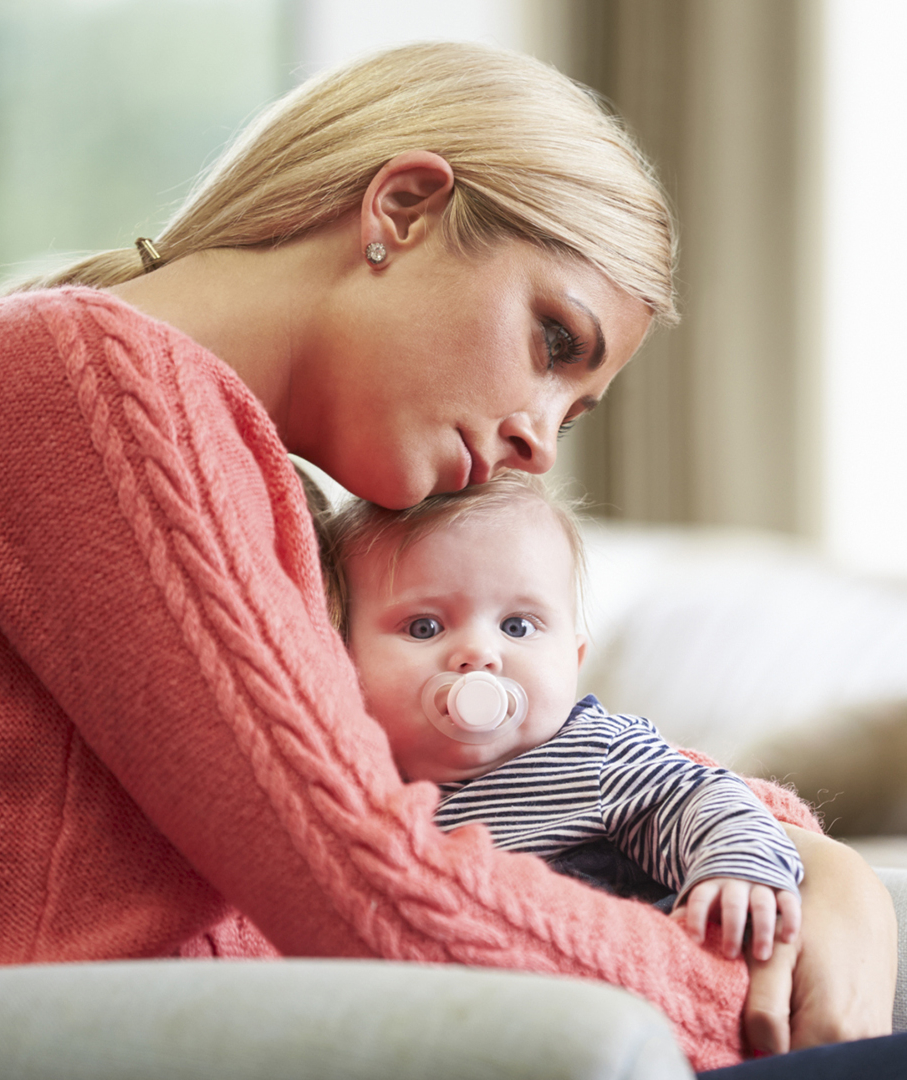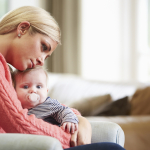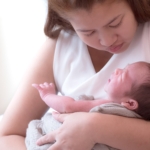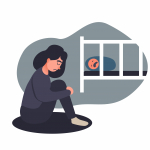Women are at significant risk for severe psychiatric illness after childbirth, particularly during the first three months. Suicide is a rare but tragic outcome of untreated psychiatric illness in this setting. In order to prevent suicide, we must be able to identify which women are at highest risk for suicide; however, relatively few studies have addressed this important issue.
Probably the greatest barrier to being able to define risk factors for suicide during the postpartum period is that suicide is a relatively rare event. We have seen several studies over the last few years which have looked at risk factors for suicidal ideation; however, only a handful of women who report suicidal thoughts will go no to attempt suicide, and it is unclear that the factors which predict suicidal ideation are the same as the factors which predict a suicide attempt or completed suicide.
In order to reliably identify factors which predict risk for suicide, we need to be able to study large numbers of postpartum women. Some of the largest and richest health-related databases are from the Scandinavian countries, and several recent studies have attempted to use these databases in order to learn more about perinatal suicide.
Earlier this year, a register-based study from Sweden identified 103 maternal deaths by suicide that occurred during pregnancy or within one year of childbirth (between the years of 1980 and 2007). The maternal suicide rate was 3.7 per 100,000 live births. (In the general population of Swedish females, the suicide rate is about 10 per 100,000.) The maternal suicide rate was about threefold higher in women born in low-income countries (odds ratio 3.1 (95% CI 1.3-7.7)). While 77 women had received psychiatric care at some point, 26 women had no documented psychiatric care. At discharge after delivery, only 20 of the 103 women had a plan to pursue psychiatric follow-up.
In another register-based cohort study, this one from Denmark, Johanssen and colleagues identified 2,699 women who had their first psychiatric contact (inpatient or outpatient) during the first three months postpartum. They calculated the mortality rate in this population, including deaths from natural causes (diseases and medical conditions) and unnatural causes (suicides, accidents, and homicides). As comparison groups, they identified a group of women with no psychiatric illness and another group of women who had non-postpartum onset of psychiatric illness.
Mortality rate ratios (MRRs) were calculated, where women with no psychiatric illness had the lowest mortality rate and served as the reference group (MRR=1). The following MRRs were calculated:
- Women with postpartum onset of psychiatric illness, MRR=3.74 (95% CI=3.06-4.57).
- Women with non-postpartum-onset psychiatric illness, MRR=2.73 (95% CI=2.67-2.79)
- Childless women with psychiatric illness, MRR=6.15 (95% CI=5.94-6.38).
Unnatural cause of death represented about 40% of fatalities among women with postpartum psychiatric illness. Looking at the first year after diagnosis, suicide risk increased dramatically and was nearly 300 times higher in the women with postpartum psychiatric illness than the suicide risk observed in women with no psychiatric history (MMR=289.42; 95% CI=144.02-581.62). Suicide was more common in women with a history of substance abuse. As the time from first onset of illness increased, suicide risk in the women with postpartum psychiatric illness declined and was similar to the risk observed in women with non-postpartum psychiatric illness.
The one uplifting finding of this study was that motherhood appeared to have a positive effect on mortality rates, both for women with and without psychiatric illness, as long as the psychiatric illness did not have its onset during the postpartum period.
In an accompanying editorial, Drs. Eydie Moses-Kolko and Alison Hipwell make the following recommendations, emphasizing the importance of engaging with women and assessing risk early, even before the women conceive:
A prior personal and family history of severe postpartum psychiatric illness, including affective psychosis, bipolar disorder, and schizophrenia, demands close monitoring and management throughout the perinatal period, and particularly in the first postpartum year. Despite numerous publications asserting a clear rationale for mentally ill perinatal women to continue psychotropic medications, many will discontinue their medications and thereby expose themselves to high risk of recurrence. The availability of specialized perinatal psychiatric teams who can provide a continuum of services and support mothers in risk-benefit discussions about psychotropic use in pregnancy and lactation remains an invaluable service to enhance wellness in new mothers. Furthermore, postpartum women hospitalized with these diagnoses must be carefully managed at the time of discharge by knowledgeable outpatient clinicians. The availability of inpatient and intensive outpatient mother-baby programs for psychiatrically ill women is critical to their care in ways that promote the development of positive mother-infant emotional ties, avoid the need to separate the mother from her child, and support and encourage mothers with (at times delusional) doubts about their ability to parent.
While many women who attempt suicide during the postpartum period have contact with a mental health provider at some point prior to making an attempt, the Swedish study noted that about a quarter of the women who committed suicide had no history of psychiatric care. Moses-Kolko and Hipwell note the importance of engaging non-psychiatric health care providers, including obstetricians and pediatricians, in order to guarantee the early identification and treatment of women with perinatal mood disorders.
Ruta Nonacs, MD PhD
Esscher A, Essén B, Innala E, et al. Suicides during pregnancy and 1 year postpartum in Sweden, 1980-2007. Br J Psychiatry. 2016 May;208(5):462-9.
Johannsen BM, Larsen JT, Laursen TM, et al.All-Cause Mortality in Women With Severe Postpartum Psychiatric Disorders. Am J Psychiatry. 2016 Jun 1;173(6):635-42.








Leave A Comment